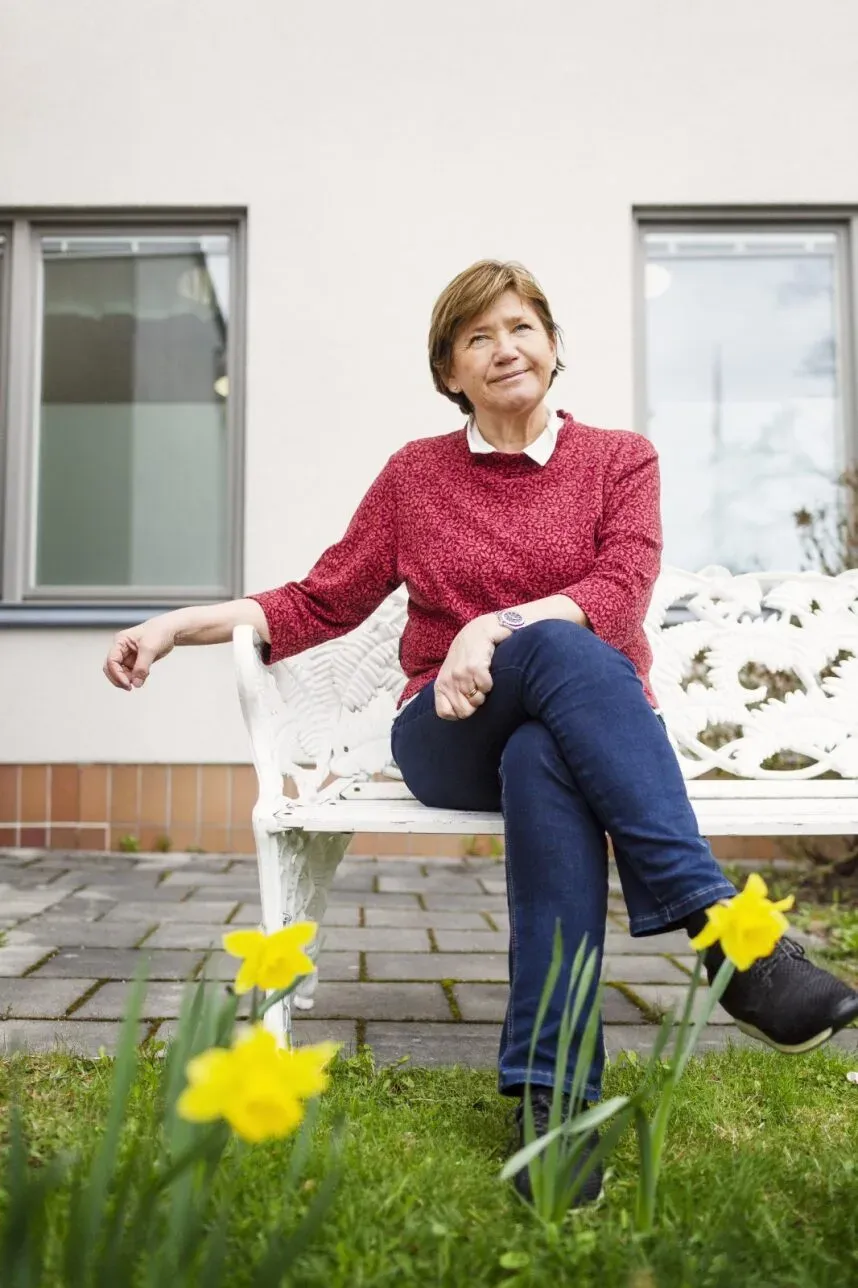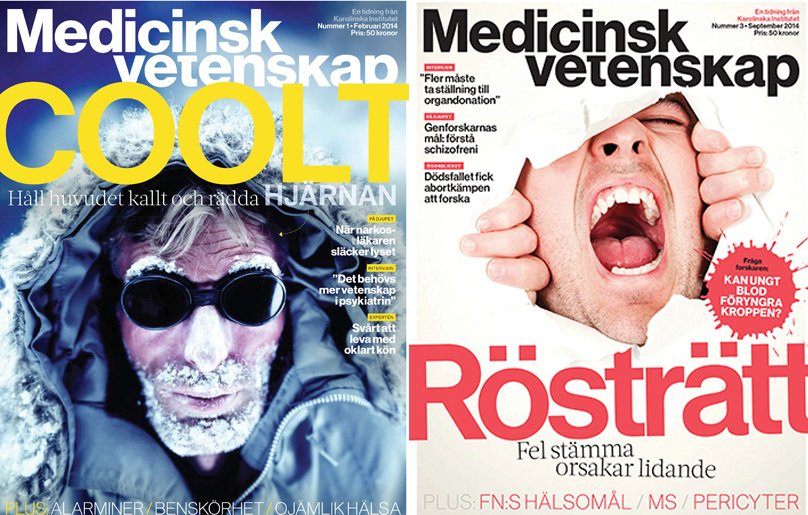When Inger Kull was a new nurse in the early 1980s, researchers were looking for risk factors. Today she is a professor and prefers to talk about health factors. Thirty years of research on the Bamse-children have provided answers to many questions, but not the most difficult: Why do children develop allergies?
Text: Cecilia Odlind, first published in Medicinsk Vetenskap nr 2 2024
has been around for a long time. Back in the days when asthma patients were admitted to hospitals due to asthma attacks, it was believed that allergies that could be avoided by not exposing oneself to certain substances. And when more and more children became allergic without understanding why, the idea for the BAMSE project was born.
“Researchers and were sitting in a pizzeria and came up with the name. The logo was designed by Rune Andréasson himself. The name has probably contributed to the study’s visibility,” says Inger Kull.
Bamse stands for Children, Allergy, Environment, Stockholm, and Epidemiology. It is a collaborative project between Karolinska Institutet and Region Stockholm. More than 4,000 randomly selected children were recruited for the study and Inger Kull was the research nurse who travelled to various childcare centres in the Stockholm area to inform them about the study.
The Bamse study celebrates 30 years
“We hoped to answer the question of why children develop allergies. We thought it would take four years. Even in 2024, when the study celebrates its 30th anniversary, the question remains partially unanswered,” she laughs.
Through her work on the Bamse project, Inger Kull became interested in research and wrote a thesis on the connection between an infant’s diet and allergic diseases.
“We observed that exclusive breastfeeding for at least four months reduced the risk of developing asthma and eczema. But we also found that introducing fish early in the children’s diet seemed to be a protective factor, reducing the risk of developing eczema and allergic rhinitis. These were surprising results at the time,” she says.
Today, the children included in the Bamse study are no longer children but 30 years old. Throughout their lives, their parents and eventually themselves participated in a series of questionnaires and surveys that have increased knowledge about asthma and allergies. Some participants dropped out over time, but the surveys still have a response rate of approximately 75percent.
“Our participants have contributed so much, we are truly grateful for that,” says Inger Kull.
Over time, research based on BAMSE has expanded, and there are now about 15 research groups conducting studies using the collected data. As total of 42 theses are based on BAMSE data, along with approximately 350 scientific articles. Results include identifying specific genes that increase the risk of asthma and allergy, understanding the prevalence of these conditions and tracking how allergies develop over a lifetime. Even fundamental knowledge, such as using an immunological test to distinguish true allergies from false ones, is based on data from the study.
“Cross-reactivity occurs when the body confuses different allergens. For example, you might have a genuine allergy to birch pollen, which in some individuals can lead to a reaction when eating an apple. It produces milder symptoms and is not dangerous, so it is essential for individual patients t understand the difference,” explains Inger Kull.
Even during the COVID-19 pandemic, they were able to monitor their participants. Among other things, they observed that some young adults with asthma were seriously ill with COVID-19.
“However, many of those with asthma were very worried. They did not need to be. In healthcare, we should have taken better care of them through follow-up, such as via phone or digitally. Fortunately, we were also able to show that a past COVID-19 infection did not seem to affect lung function in our young adults from the BAMSE study. Approximately 16 percent experiencing long-lasting symptoms or discomfort, known as post-COVID. We are now further investigating how many of these still have lingering symptoms and how they impact overall health, lifestyle, stress, and well-being,” says Inger Kull.
A future hope is also to include the Bamse participants’ own children in the study.
“This could provide answers to many questions, such as how different exposures in parents affect their children’s risk of developing asthma and allergies,” says Inger Kull.
Teenagers are lost to the health system
Inger Kull’s own research has focused on both epidemiology and nursing science. Recently, she has been passionate about how teenagers and young adults with asthma and allergies are often lost to healthcare. They have very limited healthcare contacts and medication use. The team first noticed the phenomenon in interview studies and later in follow-up registry studies, where they found that teenagers and young adults were almost entirely absent from allergy care.
“We were surprised when we discovered this. But it is likely that when children are younger, their parents are more involved in their illness. As they get older, they are expected to take care of their own health. However, they are rarely prepared for this transition, and a gap arises,” says Inger Kull.
She believes that healthcare needs to assist and support young people in managing their self-care.
“We call it transition. This has been much better managed for young people with heart disease or diabetes. However, there are so many individuals with allergic diseases that it has become somewhat more challenging. But now we have developed an educational initiative, a practical mode to empower young people with asthma and allergies. The model is straightforward and can be used in both primary care and pediatric specialist services,” says Inger Kull.
It involves ensuring that young people have knowledge to manage their medications, understand how to adjust doses based on symptoms, and plan for their care if‒ for example, when traveling or if they become ill. If the goes well, Inger Kull hopes that the model can be incorporated into national guidelines for transition. When the ³Ô¹ÏÍøÕ¾ Board of Health and Welfare issued guidelines for asthma care in 2015, the evidence base was too small to make definitive statements about how the care for transitioning youth should be conducted. Inger Kull was part of the expert group, which included not only physicians but also a nurse and a physiotherapist. She believes the diversity is essential.
“We can contribute knowledge about more patient-oriented issues,” she says.
Being both a professor and a nurse is relatively uncommon in allergy research, and according to Inger Kull, it makes her feel like she is “neither fish nor fowl”.
“I move more freely between different groups and hierarchies and feel accepted everywhere, which is a strength,” says Inger Kull.

Another current research question is a comparative study of the occurrence of severe allergic reactions, anaphylactic shock, in children in Sweden and Finland. It was a coincidence that these two countries were compared, but it turned out that the occurrence differed.
“It is more common in Finland, interestingly enough. We do not know why, but we want to find out. In parallel, we are conducting interview studies with children on what it is like to live with severe allergies,” says Inger Kull.
Exposure to allergenic substances encouraged
In parallel with Inger Kull’s research career, knowledge about allergies has increased and healthcare has evolved. Exposure to potentially allergenic substances is now encouraged.
In the past, we believed that one should avoid things like fish and eggs early in life. But today we do not give such advice. As long as you are healthy and feeling well, there is nothing specific we recommend avoiding these days,” she says.
Researchers now focus more on health factors than risk factors. And asthma medications have become so effective that most people with asthma should not experience symptoms. However, there is a group with a more severe form of asthma where follow-up and support from healthcare are crucial.
“It is almost as if people do not realise that despite everything, asthma can be a very serious condition if left untreated. They have forgotten what it was like,” says Inger Kull.
For Inger Kull, relying on scientific evidence is essential, especially in teaching, which she emphasises.
“Teaching students evidence-based care and inspiring them to seek knowledge and influence healthcare is rewarding and very enjoyable. I want them to feel empowered,” she says.
About Inger Kull
Title: Professor at the Department of Clinical Research and Education, Södersjukhuset, Karolinska Institutet. Research and development leader and specialist nurse at Sachsska Children’s and Youth Hospital.
Age: 65.
Family: Husband, three children and six (soon to be seven) grandchildren.
How I relax: Skiing and spending time in the archipelago. I also love sauna baths every Friday evening.
Driving force: To have fun at work!
Role model: I have not had a clear role model; my background is quite unique. As a research nurse, I have probably wanted to be a role model myself, showing that it is possible.
Best research skill: I am highly organised. focus more on possibilities than problems. My combined experiences from epidemiological and nursing science complement each other well.
Inger Kull on…
allergy Adaptation: If there is a highly allergic person in a workgroup or school, restrictions should be implemented. However, these rules should not be applied uniformly everywhere; that is unnecessary.
structured work: I always set goals but then tackle one thing at a time. I usually start with the most challenging and essential task. Once that is done, I often feel satisfied and can address other matters.
Her background: My parents were not academics and no one in my family is involved in research. It is quite refreshing and provide me with perspective. Sometimes they wonder why I dedicate so much time to this.
living with allergies: Healthcare providers should explain to reduce unnecessary fear. For example, that peanut allergens are not airborne, and cross-reactivity might mean you can eat apple pie but not apples.

The magazine Medical Science
The magazine Medical Science (Medicinsk Vetenskap) is published by Karolinska Institutet and targets the general public interested in medical science.







